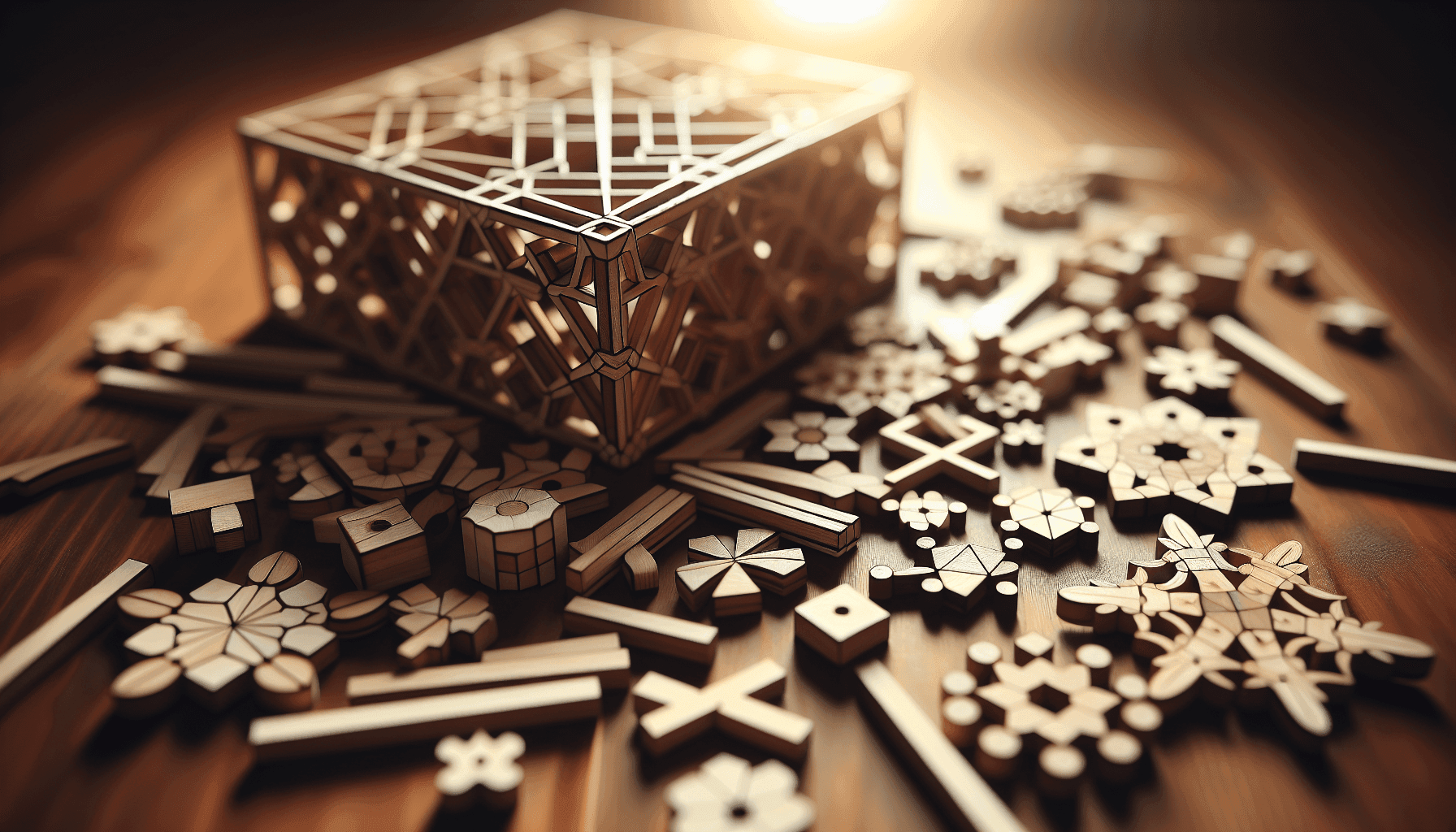Have you ever started a 3D wooden puzzle but didn’t have enough time to complete it in one go? It’s a common situation for puzzle enthusiasts who relish in the intricacy and patience required to accomplish these engaging tasks. But once you’ve laid out all the pieces and made significant progress, the last thing you want is to lose traction, misplace pieces, or risk damaging what you have built so far. So the big question is: how do you store an incomplete 3D wooden puzzle safely without losing your hard-earned progress or pieces?
Understanding the Basics of 3D Wooden Puzzles
3D wooden puzzles are more than just kits with interlocking pieces; they’re a deep dive into craftsmanship and mechanical wonders. When working on something from brands like Robotime, Rokr, Ugears, or Wooden City, you’re not just assembling pieces; you are building an experience. These puzzles often require hours of dedicated focus and offer a rewarding challenge that many find irresistible.
Why is Safe Storage Important?
Storing your incomplete puzzle safely is crucial to avoid losing pieces and preserving your progress. Unlike traditional puzzles, where pieces are flat and can be easily stored in a pouch or box, 3D models have parts that could be delicate. These parts, once interlocked, can be challenging to piece back together should they become damaged or dislodged.
Preparing for Storage: The Right Place and Tools
Having a strategy for storing your puzzle midway is essential. It involves a mix of correct practices and the right tools to ensure that neither puzzle pieces nor assembled sections face any damage.
Choosing the Right Spot
Finding a suitable place to store an incomplete puzzle can be the first big step. This place should be safe, dry, and protected from elements like wind, water, or extreme temperatures.
What to Consider:
- Protection from Elements: Moisture can warp the pieces, so a dry spot is essential.
- Avoid High Traffic Areas: Prevent accidental disturbances by selecting a low-traffic area.
- Stable Surface: Ensure the foundation is even to prevent pieces from sliding or falling.
Essential Storage Tools
You might need some tools and materials that assist with organization and preservation.
Useful Storage Tools:
| Tool/Material | Purpose |
|---|---|
| Ziplock bags | For storing small and loose pieces to prevent misplacement. |
| Bubble wrap | Helps in cushioning and protection of built sections. |
| Shoe boxes or Tupperware | Acts as a containment unit for larger assembled units. |
| Label stickers | For marking disassembled parts and ensuring easy re-assembly. |

Strategies for Safe Incomplete Puzzle Storage
Once you’re organized with space and tools, there are specific strategies to follow that will help in securing your puzzle parts effectively.
Disassembly and Storage Strategy
If you decided to postpone piecing your puzzle temporarily, disassembling the sections is a viable option. It involves breaking down parts that have been assembled and storing them similarly to unassembled pieces.
Guidelines:
- Part by Part Approach: Disassemble one section at a time to avoid confusion.
- Keep Interlocking Parts Together: Sometimes re-attaching takes time; hold these pieces together if possible.
- Label Each Disassembled Part: This aids in putting the puzzle back together when it’s time to resume.
Keeping Assembled Sections Intact
If you are satisfied with your progress and firm sections are established, there might be no need to disassemble everything.
Tips:
- Reinforce Connections: Consider using masking tape gently around connections that face potential slipping.
- Utilize Bubble Wrap: Wrap the existing structure carefully to minimize impact.
- Fixed Containers: Shoe boxes or other rigid containers ensure no movement disturbs your work.
- Dedicated Puzzle Tray: A flat tray lets you slide sections out easily without damage risk.
Avoid Common Mistakes in Storage
Mistakes can happen and lead to frustration and even puzzle losses. Being aware of potential pitfalls ensures your storage efforts are maximized.
Common Mishaps:
- Mixing Parts from Different Puzzles: Always segregate pieces and constructions from different puzzles to avoid confusion.
- Skimping on Protection: Don’t overlook the need for cushioning; hard impacts can cause irreversible damage.
- Forget to Account for Delicacy: Treat each piece and section with care as they are engineered delicately.
Practical Advice:
Develop a checklist for when you decide to store your pieces. Items on this checklist may include crossing off zip-lock bags packed, assembled sections wrapped, and storage place verified against disturbances. This strategy minimizes errors and affords peace of mind.

Conclusion: Returning to Your Project
With your puzzle safely stored, you can return to your masterpiece whenever the time is right, free from concerns of missing or damaged sections. The trick is balancing accessibility with protection and organization.
Encouragement for Continued Projects
Remember, these puzzles are meant to be enjoyed at your own pace. Properly storing and systematically returning helps preserve enthusiasm and focus.
Whether you’re working on models from EWA, Vitascope, or Handmadecity—or building majestic projects for personal satisfaction or as decor pieces—safeguarding your work ensures your efforts lead to gratifying completion. Enjoy every twist, turn, and connection as it comes together to form something truly unique!
Ready to start your 3D wooden puzzle journey? Click on any of the following links for our reviews:
All Categories | Boats | Clocks | Marble Runs | Musical Boxes | Musical Instruments | Puzzle Boxes | Trains | Trams | Trucks